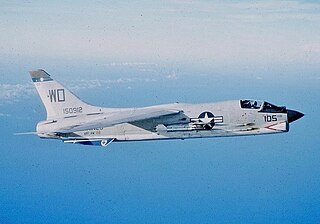
The Vought F-8 Crusader is a single-engine, supersonic, carrier-based air superiority jet aircraft designed and produced by the American aircraft manufacturer Vought. It was the last American fighter that had guns as the primary weapon, earning it the title "The Last of the Gunfighters".

A carrier air wing is an operational naval aviation organization composed of several aircraft squadrons and detachments of various types of fixed-wing and rotary-wing aircraft. Organized, equipped and trained to conduct modern US Navy carrier air operations while embarked aboard aircraft carriers, the various squadrons in an air wing have different but complementary missions, and provide most of the striking power and electronic warfare capabilities of a carrier battle group (CVBG). While the CVBG term is still used by other nations, the CVBG in US parlance is now known as a carrier strike group (CSG).

Naval Air Facility Washington or NAF Washington is a United States Naval Reserve installation located near Camp Springs, Maryland in the United States of America. The facility was established at Andrews Air Force Base in 1958. As part of the 2005 Base Realignment and Closure (BRAC) program, it merged with Andrews Air Force Base in 2009, to create Joint Base Andrews-Naval Air Facility Washington.

Fighter Squadron 124 or VF-124Gunfighters was a fleet replacement squadron (FRS) of the United States Navy. Originally established on 16 August 1948 as VF-53, it was redesignated VF-124 at NAS Moffett Field on 11 April 1958 due to a need for an increased number of flight training squadrons, itself necessary because of introduction of swept wing fighters into Navy service. In 1961, the squadron relocated to NAS Miramar, California, which would become the U.S. Pacific Fleet's Master Jet Base for fighter aircraft.
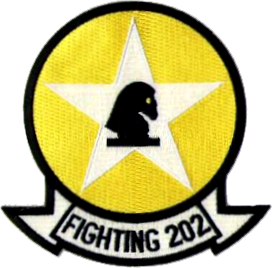
Fighter Squadron 202 (VF-202) nicknamed the Superheats was an aviation unit of the United States Naval Reserve initially based at Naval Air Station Dallas, Texas. Following that installation's BRAC-directed closure, the squadron relocated to nearby former Carswell Air Force Base, which was transferred to U.S. Navy control according to BRAC action and renamed Naval Air Station Joint Reserve Base Fort Worth / Carswell Field. VF-202 was established on 1 July 1970 as part of Reserve Carrier Air Wing 20 (CVWR-20), the U.S. Atlantic Fleet's reserve carrier air wing, and disestablished on 31 December 1994. During its service VF-202 could be identified by the tail code "AF" and nose numbers (MODEX) "200" through "213."

Donnie L. Cochran is a former United States Navy naval aviator and was the first African-American aviator to be selected to the Flight Demonstration Squadron Blue Angels in 1986. Cochran later assumed command of the Blue Angels in 1994. He is a 2022 inductee to the Georgia Aviation Hall of Fame.

William Ecker was a United States Navy officer.

Light Photographic Squadron 62 (VFP-62) was an aviation unit of the United States Navy in service from 1949 to 1968. The squadron provided a detachment of reconnaissance planes for each of the carrier air wings of the U.S. Atlantic Fleet.

Naval Air Station Cecil Field or NAS Cecil Field was a United States Navy air base, located in Duval County, Florida. Prior to October 1999, NAS Cecil Field was the largest military base in terms of acreage in the Jacksonville, Florida area.

VFP-63 was a Light Photographic Squadron of the U.S. Navy. Originally established as Composite Squadron Sixty-One (VC-61) on 20 January 1949, it was redesignated as Fighter Photographic Squadron (VFP-61) on 2 July 1956. Redesignated as Composite Photographic Squadron Sixty-Three (VCP-63) on 1 July 1959 and finally redesignated as Light Photographic Squadron Sixty-Three (VFP-63) on 1 July 1961. The squadron provided a detachment of reconnaissance planes for each of the Carrier Air Wings of the U.S. Pacific Fleet. The squadron was disestablished on 30 June 1982.

RVAH-1 was a Reconnaissance Attack (Heavy) Squadron of the U.S. Navy. Originally established as Heavy Attack Squadron One (VAH-1) on 1 November 1955, it was redesignated as Reconnaissance Attack (Heavy) Squadron One (RVAH-1) on 1 September 1964. The squadron was disestablished on 29 January 1979.
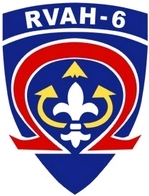
RVAH-6 was a Reconnaissance Attack (Heavy) Squadron of the U.S. Navy. Originally established as Composite Squadron Six (VC-6) on 6 January 1950, it was redesignated as Heavy Attack Squadron Six (VAH-6) on 1 July 1956 and was redesignated as Reconnaissance Attack (Heavy) Squadron Six (RVAH-6) on 23 September 1965. The squadron was disestablished on 20 October 1978.

RVAH-9 was a Reconnaissance Attack (Heavy) Squadron of the U.S. Navy. Originally established as Composite Squadron Nine (VC-9) on 15 January 1953, it was redesignated as Heavy Attack Squadron Nine (VAH-9) on 1 November 1955 and was redesignated as Reconnaissance Attack (Heavy) Squadron Nine (RVAH-9) on 3 June 1964. The squadron was disestablished on 30 September 1977.

RVAH-13 was a Reconnaissance Attack (Heavy) Squadron of the U.S. Navy. Originally established as Heavy Attack Squadron Thirteen (VAH-13) on 3 January 1961 it was redesignated as Reconnaissance Attack (Heavy) Squadron Thirteen (RVAH-13) on 1 November 1964. The squadron was disestablished on 30 June 1976.
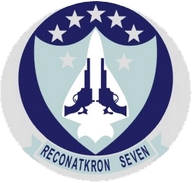
RVAH-7 was a reconnaissance attack (heavy) squadron of the U.S. Navy. Originally established as Composite Squadron Seven (VC-7) on 10 August 1950, it was redesignated as Heavy Attack Squadron Seven (VAH-7) on 1 November 1955 and was redesignated again as Reconnaissance Attack (Heavy) Squadron Seven (RVAH-7) on 1 December 1964. The squadron was disestablished on 28 September 1979.

RVAH-5 was a Reconnaissance Attack (Heavy) Squadron of the U.S. Navy. Originally established as Composite Squadron Five (VC-5) at Naval Air Station Moffett Field, California on 9 September 1948, it was redesignated as Heavy Attack Squadron Five (VAH-5) on 1 November 1955 and was later redesignated as Reconnaissance Attack (Heavy) Squadron Five (RVAH-5) in May 1964. The squadron was disestablished on 30 September 1977.

RVAH-3 was a Reconnaissance Attack (Heavy) Squadron of the U.S. Navy that served as the Fleet Replacement Squadron (FRS) for the RVAH community. Originally established as Heavy Attack Squadron Three (VAH-3) on 15 June 1956, it was redesignated as Reconnaissance Attack (Heavy) Squadron Three (RVAH-3) on 1 July 1964. The squadron was disestablished on 17 August 1979.
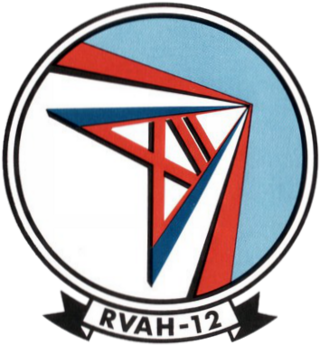
RVAH-12 was a Reconnaissance Attack (Heavy) Squadron of the U.S. Navy. The squadron was established on 1 July 1965 and disestablished on 2 July 1979.

RVAH-14 was a Reconnaissance Attack (Heavy) Squadron of the U.S. Navy. The squadron was established on 14 February 1968 and disestablished on 1 May 1974.
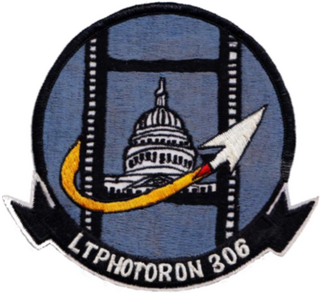
VFP-306 was a Light Photographic Squadron of the United States Navy Reserve established on 1 June 1970. The squadron was disestablished on 30 September 1984.



















